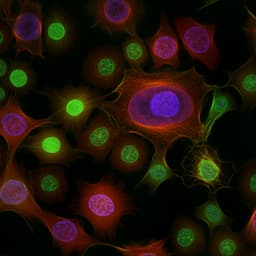
Medicine and Health
Experiences of pregnant women with genome-wide non-invasive prenatal testing in a national screening program
K. R. M. V. D. Meij, Q. Y. F. V. D. Pol, et al.
Join researchers Karuna R. M. van der Meij and colleagues as they explore the preferences of 423 pregnant women in a national screening program for non-invasive prenatal testing. Discover why an overwhelming majority chose genome-wide testing over targeted options and their thoughts on future screening possibilities.
~3 min • Beginner • English
Related Publications
Explore these studies to deepen your understanding of the subject.







